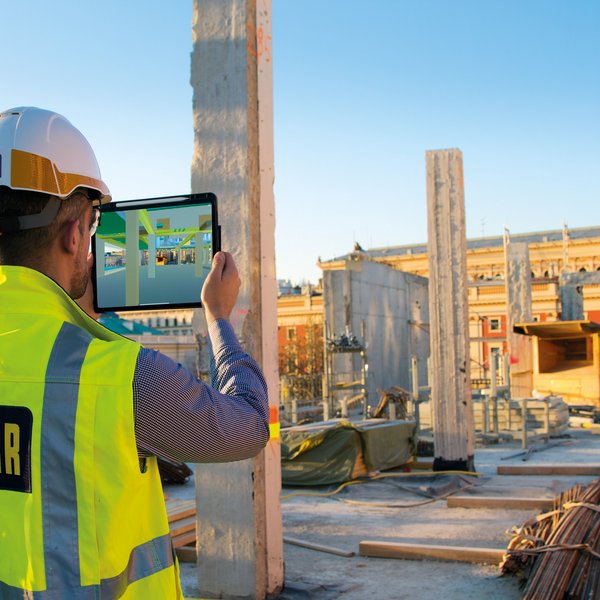
Innovative materials for clean air
The Covid pandemic and global lockdowns have caused immense damage to a lot of people and to the economy. But the environment managed to breathe a sigh of relief. Satellite images showed clean air in regions where pollution from particulate emissions is normally very high and smog clouds your vision. However, this positive impact of the global pandemic may well be short-lived. Air pollution has picked right back up again as urban economies have reopened. And that’s why we need long-term solutions.
Major risk
Air is basically composed of around 80% nitrogen and 20% oxygen. Depending on the location, the time of year and the climatic conditions, it can, however, also contain gaseous substances. And, depending on their concentration, these can present a risk to people and the environment. Included here are substances like nitrogen dioxide, sulphur dioxide and ozone.
According to the European Environment Agency, EEA for short, air pollution remains one of the biggest environmental risks facing Europe. At the same time, urban environments with industry and traffic sometimes have levels of air pollution that experts classify as alarming. Low-emission traffic zones and toll charges are just some of the obvious ways of improving air quality in cities. But innovative construction materials can also help to reduce pollution.
![[Translate to English:] Emotion statt Emission A large, eye-catching mural on a building in an urban environment with the inscription "Emotion instead of emission" and the IKEA logo underneath.](/fileadmin/_processed_/9/a/csm_Airlite_Frau_Isa_0fec81895c.jpg)
![[Translate to English:] Emotion statt Emission A large, eye-catching mural on a building in an urban environment with the inscription "Emotion instead of emission" and the IKEA logo underneath.](/fileadmin/_processed_/9/a/csm_Airlite_Frau_Isa_0fec81895c.jpg)
Fresh air
Scientists have recently discovered that blending titanium dioxide nanoparticles into construction components and buildings has a positive impact on air quality. Titanium oxide is also a core ingredient in the innovative wall paints of company AIRLITE. Developed in Italy with the aid of EU subsidies, the product promises to reduce amounts of nitrogen oxide, sulphur oxide, ammonia and carbon monoxide, both indoors and out. Instead of toxic chemicals, the natural paints contain nanoparticles. These nanoparticles break down volatile organic compounds and act as a repellent against bacteria, viruses and mould spores.
The titanium dioxide particles are activated by light. The interaction with humidity in the air has a catalytic effect that produces special ions known as hydroxyl radicals. They serve as Mother Nature’s cleaning agents. This technology reduces air pollutants by 89% and eliminates 99.9% of all bacteria and viruses on treated surfaces. What’s more, the paint reflects sunlight, thereby reducing the energy costs associated with cooling by up to 29%.
Did you know ...
- … that painting 100m² of office space with AIRLITE is just as effective as a space of the same size covered in mature trees
- … that carbon dioxide concentration regularly falls in spring? That’s because the vegetation that’s awakening needs carbon dioxide for photosynthesis.
- … that road traffic in Europe’s cities plummeted by 30 to 50% during the global lockdown?


![[Translate to Englisch:] (c) Jvan Tresch [Translate to Englisch:] (c) Jvan Tresch](/fileadmin/_processed_/c/b/csm_Chalchschijen_MG_6744__4__21149fd843.jpg)